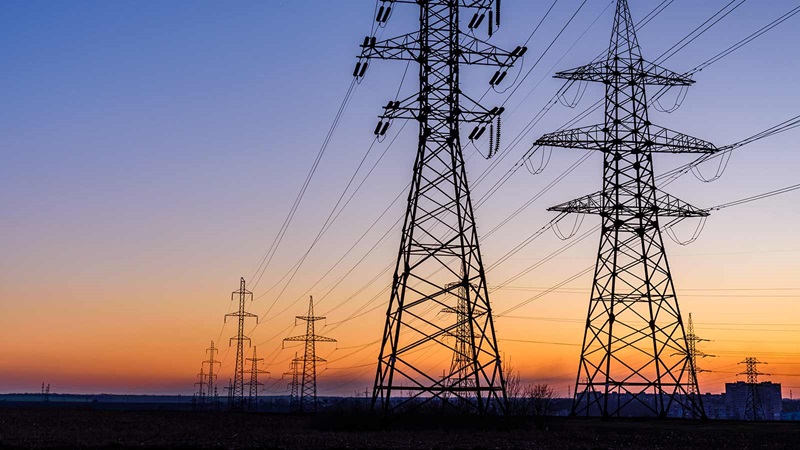Energising the grid with a delivery partner approach to infrastructure
For years, grid connection difficulties have threatened the efficacy of the energy sector. Last month, the issue was brought to the fore once again, when the BBC reported that “billions of pounds' worth of green energy projects are on hold because they cannot plug into the UK's electricity system.”
While the UK is no stranger to questions around its energy security, not least since the invasion of Ukraine and further souring of relations with Russia, findings like this will only add fuel to the fire and heighten concerns among the industry and public alike.
The infrastructure needed to generate energy and deliver it into households will never be owned and operated by a single organisation, so the picture is a complex one with countless parties and interfaces muddying the water. But this mustn’t be a blocker to progressive change.
A delivery partner – given the mandate to drive the integration of multiple projects (generation, transmission and distribution), multiple stakeholders and multiple contractors at every stage of the lifecycle to ensure a programmatic, whole-system approach – can be at the vanguard of a much-needed shift.
How a delivery partner can ease the challenge
The energy sector has to deliver more infrastructure than ever before. This uplift in the delivery volumes is a massive challenge – EDF, for instance, is delivering two nuclear power stations at once, while National Grid has plans to deliver more over next six years than it has in the last 30. What’s more, over the last five years, the volume of new connection offers provided by the Electricity System Operator (ESO) has grown tenfold, we’re seeing a similar trend in the water sector too.
And so, the approach needs to change. The sector needs a model that enables clients to upscale and grow their capacity and capabilities to deliver, but not by ‘doing more’ themselves.
Bringing in a trusted delivery partner gives client teams the headspace to operate at the ‘intelligent client’ level, focusing on strategy. The delivery partner enables this by boosting a client’s bandwidth and allowing a sharper focus on outcomes.
What is a delivery partner?
In simple terms, a delivery partner provides an end-to-end service offering across a broad scope of services in an integrated manner. It means that the client organisation, consultant and contractors will be working hand-in-hand towards a shared mission - in this case, that’s to build the infrastructure needed to get electricity to the places it’s needed.
The delivery partner approach brings many benefits, but in the context of getting energy infrastructure built, it’s worth highlighting the value of coordination across multiple projects (owned by different organisations) to spearhead an integrated programme.
While it might appear obvious that different asset owners would simply work together to ‘get stuff done’, the reality is that all manner of blockers make this difficult. A more traditional approach to contracting doesn’t always build teams with the right skills to achieve the coordination needed.
A single programme of works
Treating a collection of projects – across generation, transmission and distribution – as a single programme, consisting of clearly defined work packages managed by focused delivery teams but all pointing to a single guiding mind (a delivery partner) can be part of the solution.
We have seen programmatic approaches before – driven through initiatives such as Project 13 and the ESO’s Regional Development Programmes – but true integration has been hard to achieve due to continued misalignment of needs and objectives.
The potential for adversarial relationships between asset owners is negated by the fact that the delivery partner has ‘skin in the game’. Under the model, performance is driven by risk and incentivisation mechanisms that intrinsically tie the success of the overall programme to that of the delivery partner. Through the implementation of shared objectives, KPIs and commitments to one another, you can make it clear to all involved that success is shared. These principles must be backed up in practice, with the delivery partner needing to be empowered to take on accountability and control so they can truly work in partnership with the clients.
If principle and practice are in place, the delivery partner can foster trust, fairness and transparency which, in turn, leads to a quicker and clearer understanding of the outcomes needed to achieve success and the collective ‘best for programme’ culture that must underpin them.
It’s not without its challenges
I am not suggesting for a second that a shift to the delivery partner model is a silver bullet – contractual arrangements, governance, incentivisation mechanisms and the presence of a regulator all form a quagmire – but if things are to improve, we need to change the current ways of working. In responding to the BBC research, Rosin Quinn, National Grid’s Director of Customer Connections said that “fundamental reform is needed”. More generally, the regulator, Ofgem, recently outlined in an open letter that intelligent change is needed. As an industry we need to rise to this challenge.
In a sector where it seems the default reason given for the challenges faced when delivering energy infrastructure are the issues within the planning system, there is a risk we pin sector frustration on red tape and NIMBYism. This is not productive.
We must be bold as an industry, identifying what we can do to speed things up – we may well avert an energy crisis in the process.
This article was originally published in Utility Week.











